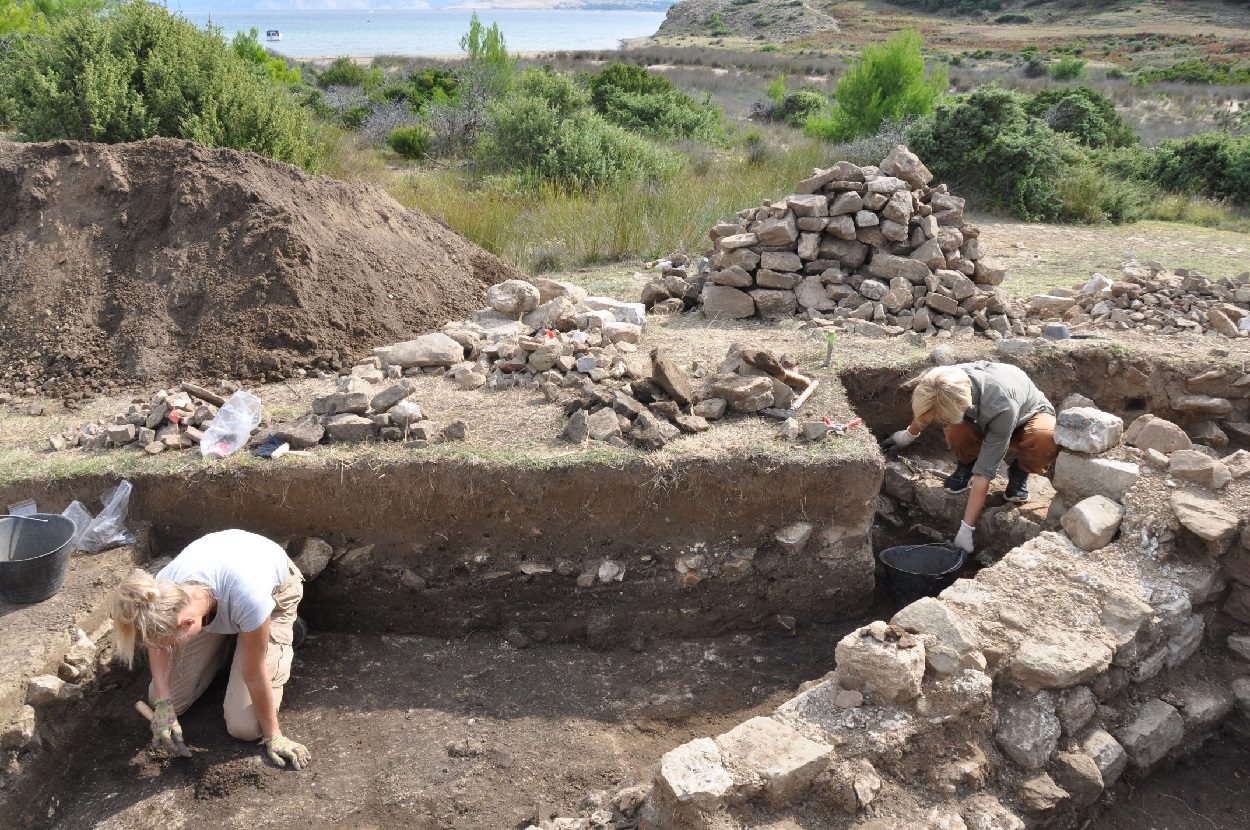Archaeologists conducting excavations of a Roman villa complex have discovered traces of buildings erected by migrant settlers after the collapse of the Roman empire.
Excavations were conducted by the Institute of Archaeology of the Cardinal Stefan Wyszyński University in Warsaw, and the Institute of Archaeology in Zagreb.
The researchers were studying a rural villa complex that dates from the 1st – 3rd century AD on the island of Rab in Croatia, when they uncovered traces of buildings erected by migrant settlers from the former Roman province of Dalmatia.
During the Roman period, the island was a major port that sat on a strategic trading route for the transportation of goods such as fine glassware, high-quality terra sigillata vessels, wine, olive oil, and fish.
Prof. Fabian Welc from the Cardinal Stefan Wyszyński University in Warsaw said: “It turned out that the area of the settlement we studied was also inhabited later after the fall of the Western Roman Empire. In the remains of the already ruined villa, makeshift wooden architecture was erected.”

Welc believes that the structures were built by Roman migrants seeking sanctuary when the Dalmatia province was under threat from Ostrogoth invasion, who adapted the ruins of the villa by erecting wooden walls and roofs supported on wooden poles.
“Despite rather primitive conditions, they maintained a relatively high standard of living. Among the remains of makeshift rooms, we found imported African vessels for oil and wine, and numerous bronze items, including various coins.” added Welc.
There is evidence that during the 7th century AD, further repairs to the villa complex were undertaken by another wave of settlers – this time migrants possibly looking for shelter on the island from the Slavs or Avars breaking into the Balkans.
According to prof. Welc, the 7th century settlement phase is unique in the world of archaeology. “This is the first find of its kind in the Northeast Adriatic region. It gives an insight into the migration processes taking place at the end of antiquity and the beginning of the Middle Ages, which is unique in the archaeological material”.
Header Image Credit : Prof. Fabian Welc





